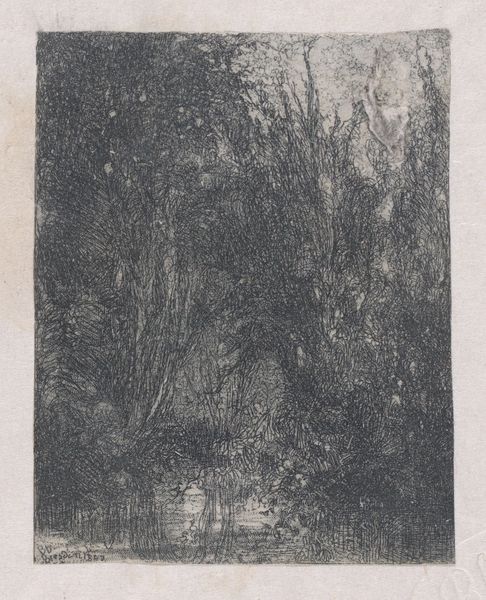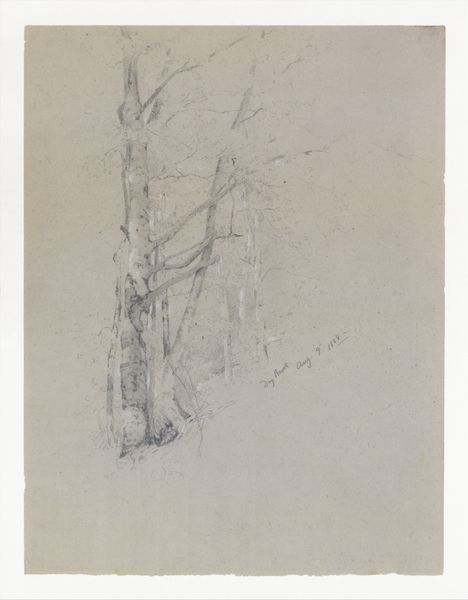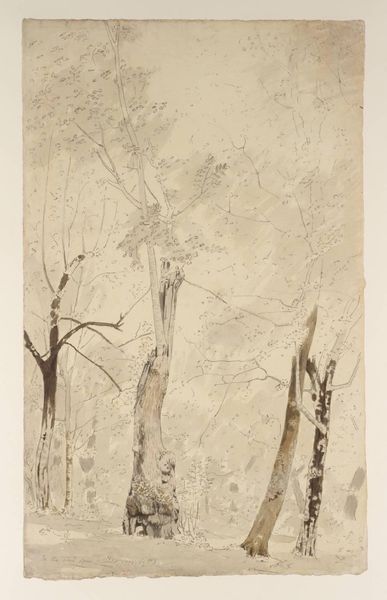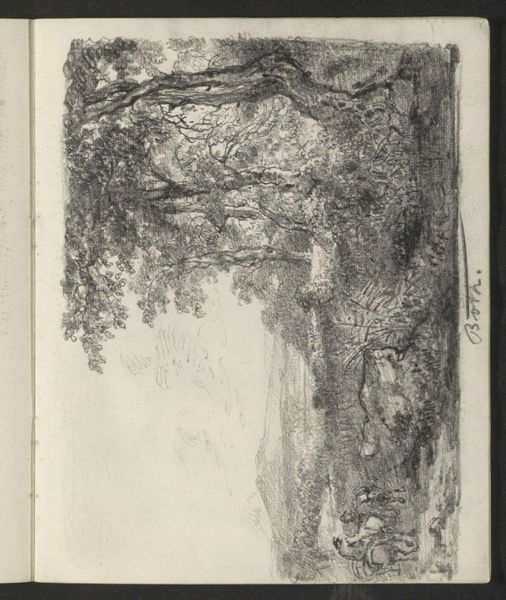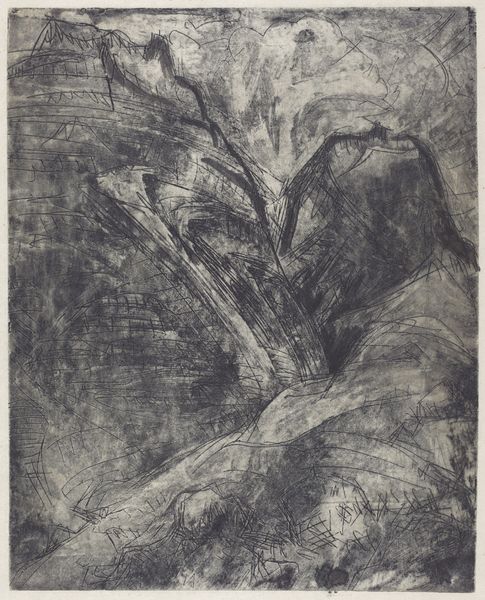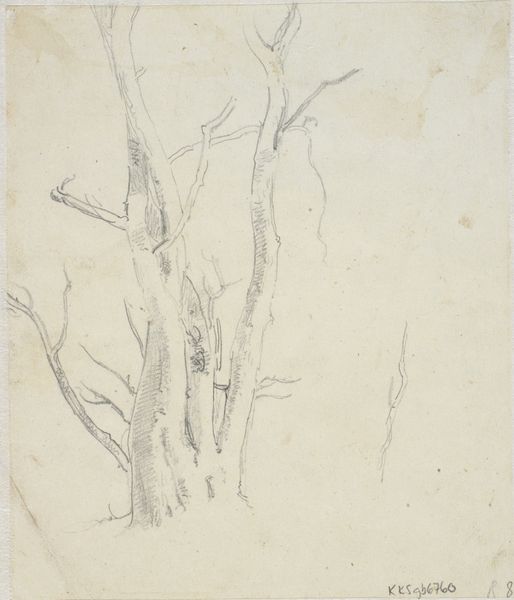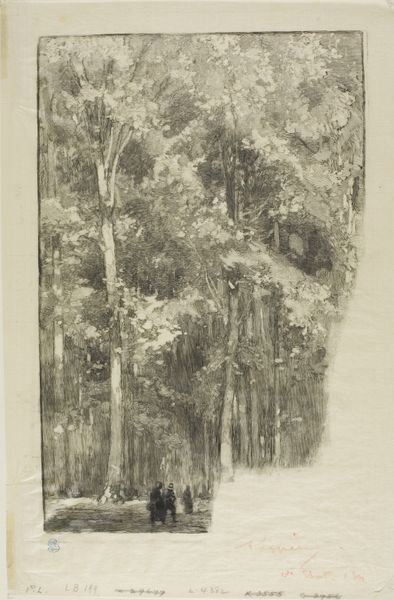
Design for a Stage Set at the Opéra, Paris 1830 - 1890
0:00
0:00
Dimensions: Irregular sheet: 11 1/8 x 6 5/8 in. (28.2 x 16.9 cm)
Copyright: Public Domain
Curator: Here we have a preliminary stage design from the Parisian Opéra, brought to life using charcoal and pencil on paper. It was produced sometime between 1830 and 1890 by Eugène Cicéri. Editor: Wow, it's like stepping into a dream. The light filtering through those trees, that implied path... it just pulls you right in, even in this sketchy form. It feels very…Brothers Grimm. A touch menacing, perhaps? Curator: Menacing, certainly, but think about the theatrical context. Sets like these, during the height of Romanticism, were meant to evoke strong emotional responses, the sublime. They were often darker, more emotionally charged than previous eras allowed. Editor: Right. That makes sense. Knowing it was meant for the Opéra, I can almost hear the soaring melodies and imagine the dramatic action unfolding in front of this very backdrop. There's a calculated vagueness to it as well. Like a landscape viewed in the fleeting, fevered space of the mind. Curator: Precisely. Cicéri was known for his contributions to theatrical design. Stage sets became increasingly significant during this period, as spectacle was used to attract broader audiences and create a richer dramatic experience, in part to help re-establish political control through soft power and visual delights. Editor: So it wasn't just about pretty scenery then? It was about making a statement? Curator: Indeed. Sets were key components of the overall cultural experience of opera, and beyond, to create impressions that theater could be just as spectacular, awe-inspiring and relevant as a king's court or cathedral. Editor: To think, a simple drawing like this had so much cultural weight. It reminds me that every artistic choice, even something as seemingly basic as a stage backdrop, reflects the values and concerns of its time. Curator: Exactly. Looking closely, it’s amazing how he suggests depth and mood using such limited materials, but a confident application of tone. You can imagine the scale it might take, translated to canvas on the actual stage. Editor: Absolutely. It’s fascinating how a fleeting sketch can still convey a sense of wonder and theatrical grandeur today.
Comments
No comments
Be the first to comment and join the conversation on the ultimate creative platform.
